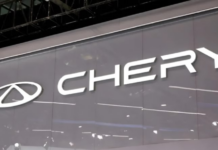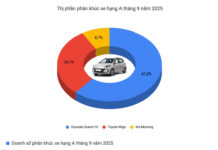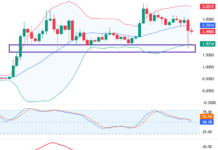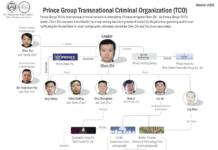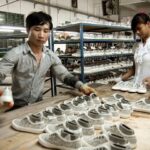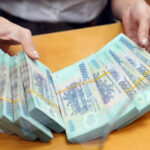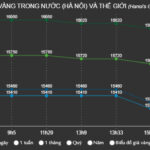For businesses, CBAM is not just a new tax but a financial litmus test: emissions now carry a real monetary value. More concerning, many companies still view it as a tax policy rather than a “carbon trap,” where those slow to transition risk losing valuation, capital, and market share.
The Context and Nature of the “Carbon Trap”
The Carbon Border Adjustment Mechanism (CBAM) implemented by the European Union aims to ensure “climate fairness” between goods produced within and outside the EU. Essentially, it taxes the carbon emissions associated with imported products, preventing companies from relocating to countries with lower environmental standards and then exporting back to Europe. In other words, CBAM transforms emissions into a tangible cost in international trade.
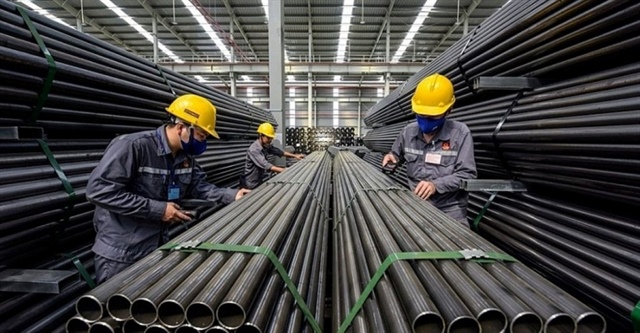
The “carbon trap” occurs when businesses have invested in high-emission technologies, making the transition to green models costly. Image: DNCC |
Thus, the “carbon trap,” or carbon lock-in, emerges when businesses have invested in high-emission production models or technologies, making the transition to green alternatives increasingly expensive. Once locked into outdated systems, equipment, or energy sources, companies face not only operational cost risks but also asset devaluation and reduced competitiveness in export markets.
In Vietnam, industries like steel, cement, electricity, chemicals, and textiles are at high risk. According to industry estimates, Vietnam’s steel sector emits 20-40% more carbon than global averages, with emissions at ~2.51 tCO₂/ton of steel compared to the global ~1.85 tCO₂/ton. When CBAM takes effect, this disparity will translate into tangible financial costs—expenses many businesses have never accounted for.
The “carbon trap” thus extends beyond production lines to how Vietnamese businesses value assets, manage risks, and plan growth strategies.
When Emission Costs Become Financial Risks
Traditionally, most Vietnamese businesses have not reflected environmental costs in financial reports. Energy and waste management expenses are treated as production costs, not long-term emission-related risks. However, with CBAM taking effect in 2026, emissions will carry a real monetary value. Exporters to Europe must declare emissions and pay corresponding carbon fees. Non-compliance or substandard data could lead to rejected goods or lower valuations.
CBAM’s impact extends beyond borders, affecting the entire financial system.
First, in business valuation, investors and lenders are factoring emission costs into risk models. High-emission businesses face larger future compliance costs, reducing net profits, discounting cash flows, and shrinking valuations. Carbon risk thus becomes a new financial variable in market pricing.
Second, in capital raising, international banks and financial institutions increasingly require carbon data for funding. Even domestic banks are “greening” credit criteria, requiring emission reduction strategies for favorable rates. Lack of ESG reporting or transition plans increases risk ratings, raises borrowing costs, and limits capital access.
Third, in supply chains, EU importers and FDI corporations demand emission transparency from Vietnamese suppliers. Even non-exporting businesses must meet partner transparency requirements, spreading ESG standards from international clients to domestic factories.
Consequently, many businesses may be undervalued—not due to inefficiency, but because unmanaged or misreported carbon risks. The “stranded assets” phenomenon, seen in coal projects losing value due to global greening, now affects all high-emission sectors. Emissions are no longer just environmental issues but structural financial risks for Vietnamese businesses.
Escaping the Carbon Trap: International Lessons and Paths for Vietnamese Businesses
As CBAM approaches, many nations have moved beyond reaction to proactive adaptation. Leading economies treat carbon not just as an environmental issue but as a financial and investment strategy variable.
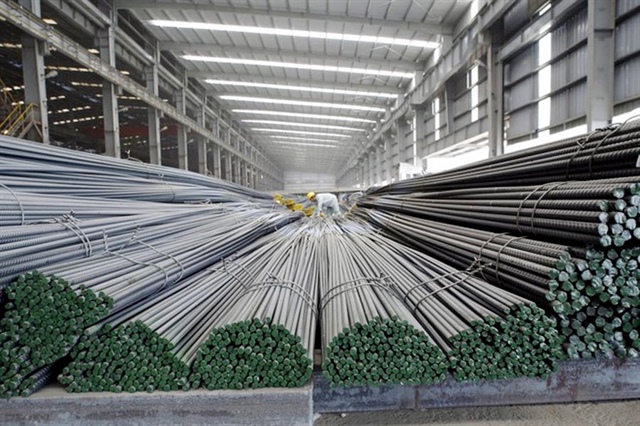
The “carbon trap” occurs when businesses have invested in high-emission technologies, making green transitions costly. Image: DNCC |
In Europe, CBAM operates alongside the EU Emissions Trading System (EU ETS), a carbon pricing mechanism since 2005. Companies must hold emission allowances for their CO₂ output. Excess emissions require purchasing additional credits; reductions allow selling surplus. ETS makes emissions a tangible cost and provides a transparent carbon market for CBAM to tax non-EU imports.
Japan goes further: Tokyo-listed companies (Prime Market) must disclose climate risks under the TCFD framework, helping investors quantify emission risks in valuations and driving self-motivated transitions.
Emerging economies like Indonesia and South Africa combine carbon taxes with technology and green credit support. Indonesia’s Sustainable Energy Fund offers low-interest loans for emission-reducing technologies, while South Africa develops domestic carbon credit mechanisms to support renewable energy.
For Vietnam, the key lesson is not mimicking models but integrating carbon risks into financial and corporate governance systems. CBAM can test new governance capabilities—linking emission data, ESG risks, and financial strategies.
Short-term, Vietnamese businesses should start with emission audits, basic ESG disclosures, and joining EU, Japanese, and Korean green supply chain initiatives. Mid-term, large companies should incorporate carbon costs into investment and risk management, treating them like interest rates or exchange rate fluctuations. Green bonds and transition finance can provide cheaper capital for technology upgrades.
Long-term, the focus is on technology and energy innovation. Early adopters of low-carbon materials, renewables, or circular processes will gain competitive advantages as Vietnam’s carbon market pilots (2025–2028). Early participation reduces CBAM compliance costs and opens carbon credit trading opportunities—a new revenue stream from emission reductions.
Escaping the carbon trap is not just about avoiding risk but unlocking new value. Businesses integrating emissions into financial strategies will shift from reactive to market-shaping positions.
In other words, “CBAM is not just pricing carbon—it’s redefining Vietnamese businesses’ competitiveness.”
CBAM is an early warning for Vietnamese businesses: emissions are no longer environmental issues but financial variables determining competitiveness. When emissions become costs reflected in pricing, companies unable to measure their carbon footprint will struggle to access capital, maintain markets, or sustain valuations.
Conversely, viewing CBAM as a catalyst for change can increase transparency, access green capital, and enhance brand value. Early integration of carbon factors into financial strategies reduces risks of undervaluation in global supply chains.
In the CBAM era, true value lies not just in profits but in emission reduction capabilities—the new measure of global competitiveness.
(1) European Commission (2024) – Taxation and Customs Union: Carbon Border Adjustment Mechanism (CBAM) Carbon Border Adjustment Mechanism – Taxation and Customs Union
(2) VNstell (2023) – Steelmakers must act now in CBAM entry Steelmakers must act now in CBAM entry
(3) EU (2025) – About the EU ETS About the EU ETS – Climate Action – European Commission
(4) Environmental Information (2025) – JPX Environmental Activities JPX Environmental Activities | Environmental Information (TCFD Disclosure/Transition Plan)
(*) Finance & Operations, Development and ESG Expert; Former Senior Finance and Operations Manager at Winrock International.
Phạm Thu Trang
– 19:00 21/10/2025
Entrepreneur’s Day: Addressing the Concerns of Businesses
Navigating the treacherous terrain of entrepreneurship, where challenges and uncertainties loom large, requires more than mere encouragement—it demands a profound understanding and strategic resolution. Unlocking the vast potential of the economy hinges on deciphering these complexities and transforming obstacles into opportunities for growth and success.
Transparent Bidding and Prioritizing Vietnamese Products for Major Projects: A Proposal by Hoa Phat Chairman
The proposal was put forward by Hoa Phat Chairman Tran Dinh Long during the Prime Minister’s meeting with business representatives on the afternoon of October 9th.
Expert Insights on Economic Shifts and Effective Strategies for Vietnamese Businesses
At the “Digital Gateway to the Global Market” event hosted by UOB Finlab, Mr. Suan Teck Kin, Managing Director of Global Economics and Market Research at UOB Bank, provided insightful analysis on macroeconomic trends and international market dynamics. His expertise empowered Vietnamese businesses to proactively strategize and seize global export opportunities.
Peer-to-Peer Lending Pilot by the State Bank: Who Qualifies and What Are the Interest Rates?
Interest rates are mutually agreed upon by both the lender and borrower, ensuring they remain within the maximum limits set forth by the Civil Code.



